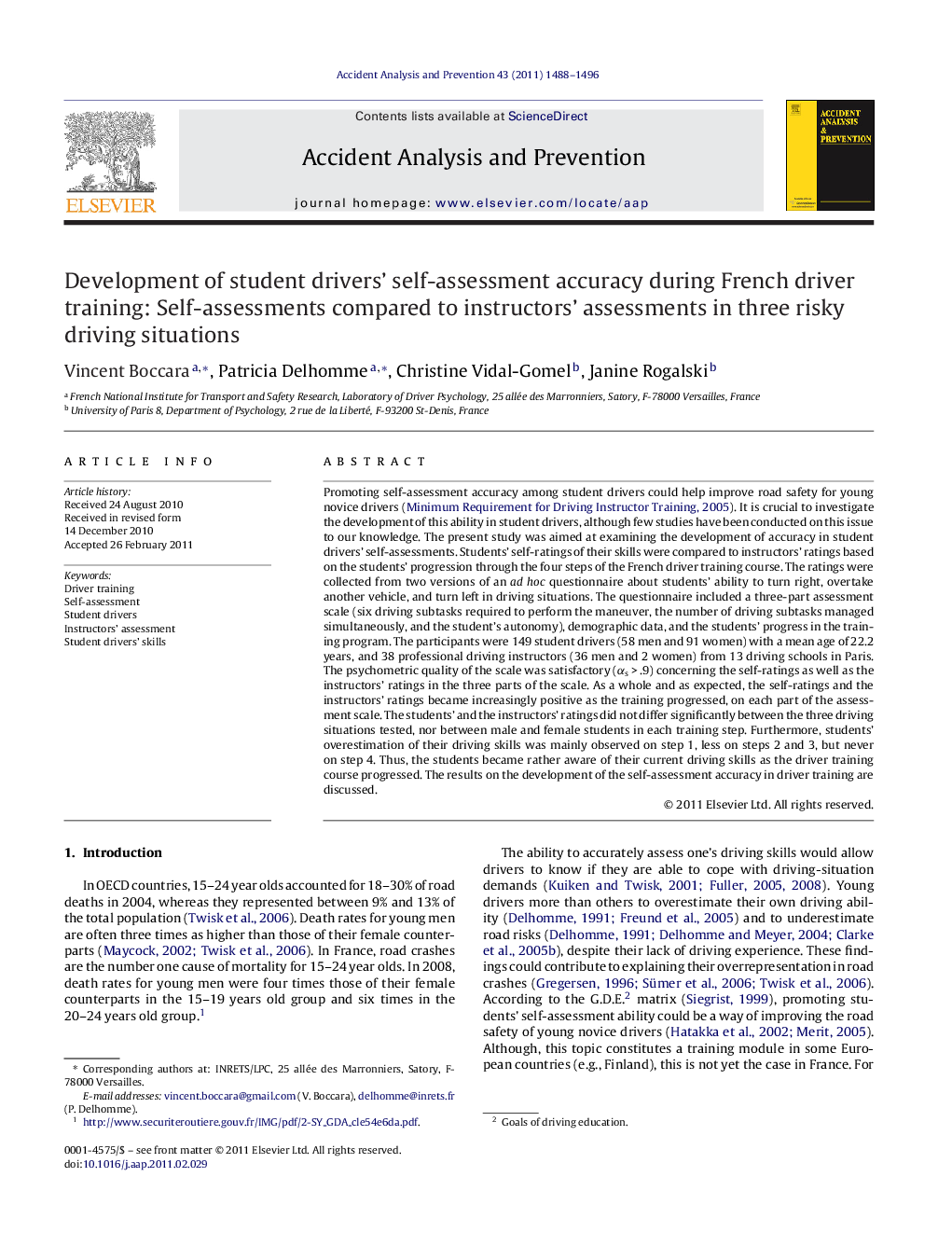| کد مقاله | کد نشریه | سال انتشار | مقاله انگلیسی | نسخه تمام متن |
|---|---|---|---|---|
| 573010 | 877387 | 2011 | 9 صفحه PDF | دانلود رایگان |

Promoting self-assessment accuracy among student drivers could help improve road safety for young novice drivers (Minimum Requirement for Driving Instructor Training, 2005). It is crucial to investigate the development of this ability in student drivers, although few studies have been conducted on this issue to our knowledge. The present study was aimed at examining the development of accuracy in student drivers’ self-assessments. Students’ self-ratings of their skills were compared to instructors’ ratings based on the students’ progression through the four steps of the French driver training course. The ratings were collected from two versions of an ad hoc questionnaire about students’ ability to turn right, overtake another vehicle, and turn left in driving situations. The questionnaire included a three-part assessment scale (six driving subtasks required to perform the maneuver, the number of driving subtasks managed simultaneously, and the student's autonomy), demographic data, and the students’ progress in the training program. The participants were 149 student drivers (58 men and 91 women) with a mean age of 22.2 years, and 38 professional driving instructors (36 men and 2 women) from 13 driving schools in Paris. The psychometric quality of the scale was satisfactory (αs > .9) concerning the self-ratings as well as the instructors’ ratings in the three parts of the scale. As a whole and as expected, the self-ratings and the instructors’ ratings became increasingly positive as the training progressed, on each part of the assessment scale. The students’ and the instructors’ ratings did not differ significantly between the three driving situations tested, nor between male and female students in each training step. Furthermore, students’ overestimation of their driving skills was mainly observed on step 1, less on steps 2 and 3, but never on step 4. Thus, the students became rather aware of their current driving skills as the driver training course progressed. The results on the development of the self-assessment accuracy in driver training are discussed.
► We aimed at examining the development of accuracy in studentdrivers’ self-assessments. Students’ self-ratings of their skills were compared to instructors’ ratings.
► The ratings were collected from two versions of an ad hoc questionnaire about students’ ability to turn right, overtake another vehicle, and turn left in driving situations.
► the self-ratings and the instructors’ ratings became increasingly positive as the training progressed.
► The students became rather aware of their current driving skills as the driver training course progressed.
Journal: Accident Analysis & Prevention - Volume 43, Issue 4, July 2011, Pages 1488–1496